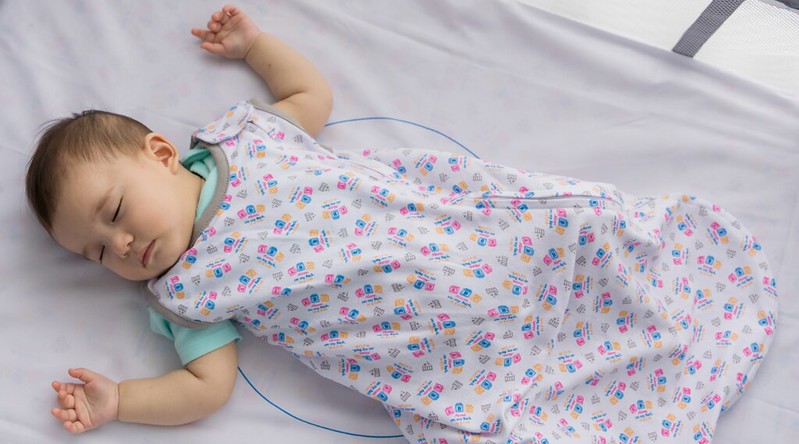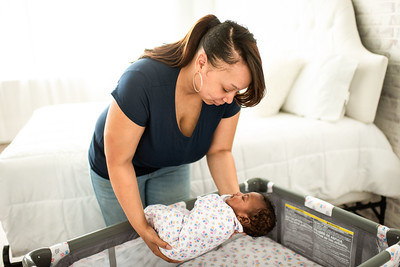Sleep Safety
Safe sleep
At Manning Family Children’s, we follow the American Academy of Pediatrics’ safe sleep recommendations to help keep babies healthy and reduce the risk of sleep-related incidents. From placing your baby on their back for every nap and nighttime sleep, to ensuring a firm, clutter-free sleep surface, these guidelines are designed to create the safest possible environment for your little one.

Best practices
A level recommendations:
-
Back to sleep for every sleep.

- Use a firm, flat, non-inclined sleep surface to reduce the risk of suffocation or wedging/entrapment.
- Feeding of human milk is recommended because it is associated with a reduced risk of SIDS.
- It is recommended that infants sleep in the parents’ room, close to the parents’ bed, but on a separate surface designed for infants, ideally for at least the first 6 months.
- Keep soft objects, such as pillows, pillow-like toys, quilts, comforters, mattress toppers, fur-like materials, and loose bedding (such as blankets and nonfitted sheets), away from the infant’s sleep area to reduce the risk of SIDS, suffocation, entrapment/wedging, and strangulation.
- Offering a pacifier at naptime and bedtime is recommended to reduce the risk of SIDS.
- Avoid smoke and nicotine exposure during pregnancy and after birth.
- Avoid alcohol, marijuana, opioids, and illicit drug use during pregnancy and after birth.
- Avoid overheating and head covering in infants.
- It is recommended that pregnant people obtain regular prenatal care.
- It is recommended that infants be immunized in accordance with guidelines from the AAP and CDC.
- Do not use home cardiorespiratory monitors as a strategy to reduce the risk of SIDS.
- Supervised, awake tummy time is recommended to facilitate development and to minimize the risk of positional plagiocephaly. Parents are encouraged to place the infant in tummy time while awake and supervised for short periods of time beginning soon after hospital discharge, increasing incrementally to at least 15 to 30 minutes total daily by age 7 weeks.
- It is essential that physicians, nonphysician clinicians, hospital staff, and child care providers endorse and model safe infant sleep guidelines from the beginning of pregnancy.
- Risk of SIDS: Proper swaddling technique should allow the hips to be flexed and abducted to reduce the risk of exacerbating developmental dysplasia of the hip. Discontinue swaddling once the infant shows signs of rolling.
- It is advised that media and manufacturers follow safe sleep guidelines in their messaging and advertising to promote safe sleep practices as the social norm.
- Continue the NICHD “Safe to Sleep” campaign, focusing on ways to reduce the risk of all sleep-related deaths. Pediatricians and other maternal and child health providers can serve as key promoters of the campaign messages.
B level recommendations:
-
Avoid the use of commercial devices that are inconsistent with safe sleep recommendations.
C level recommendations:
- There is no evidence to recommend swaddling as a strategy to reduce the risk of SIDS.
- Continue research and surveillance on the risk factors, causes, and pathophysiological mechanisms of sleep-related deaths, with the ultimate goal of eliminating these deaths entirely.
Eight Components of Safe Positioning for the Newborn While Skin-to-Skin:
- Infant's face can be seen
- Infant's head is in "sniffing" position
- Infant's mouth and nose are not covered
- Infant's head is turned to one side
- Infant's neck is straight, not bent
- Infant's shoulders and chest face mother
- Infant's legs are flexed
- Infant's back is covered with blankets

